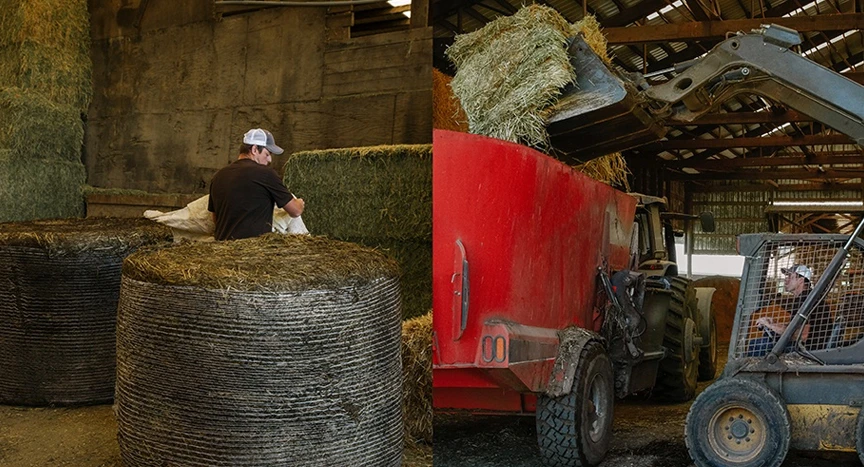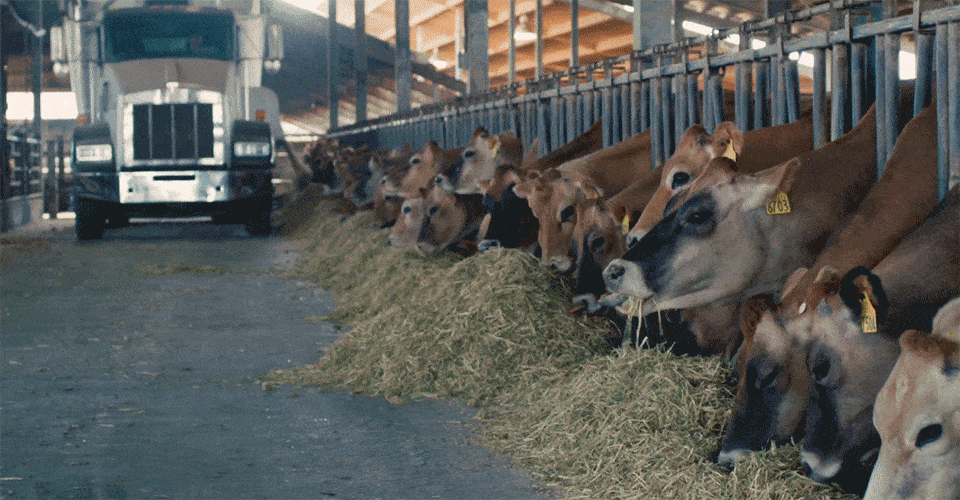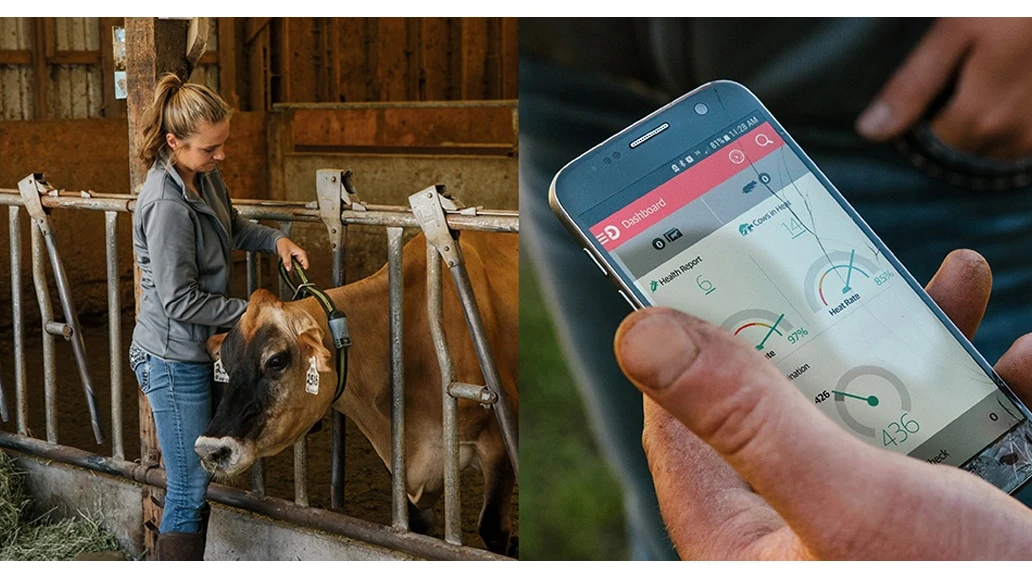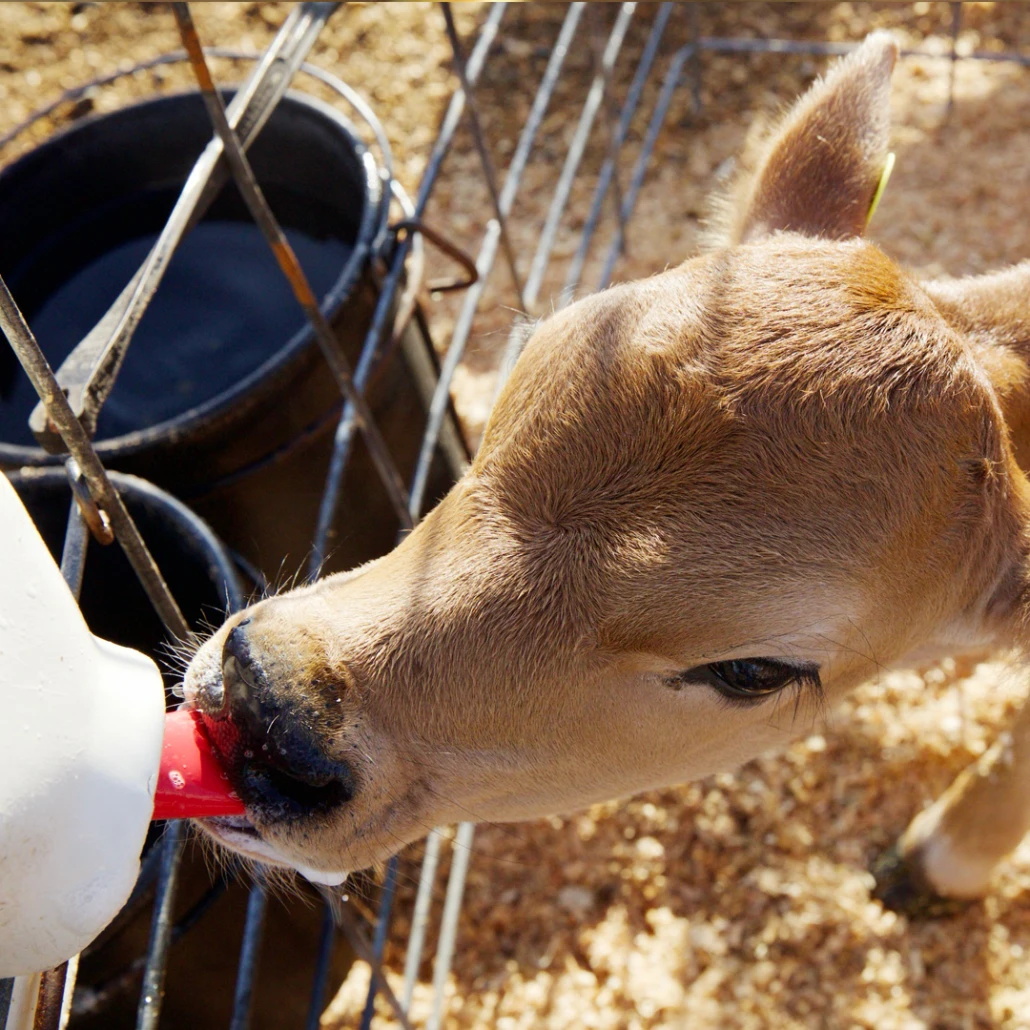Nov 9, 2020
News
A Tillamook Farmer’s Step-by-Step Guide to Cow Care
Sep 18, 2020

In order to care for dairy cows, all you have to do is feed the cows, milk the cows, repeat. Right? Wrong.
While the process of cow care might sound simple, in truth, it’s a fascinatingly complex, highly involved, 24/7 job. And actually, it’s not just one job. It’s a bunch of jobs combined. In a single day, our farmers wear multiple hats. They’re nutritionists. Cow whisperers. Professional tractor drivers. The list goes on, and every role requires a different set of skills, or steps, for providing the best care to their cows – who eventually make the best milk, for the best, damn dairy products around. We can imagine you’re curious to know the origin of all that delicious dairy. So without further ado, we present to you, a step-by-step guide to caring for dairy cows.
Step 1: Mix The Highest Quality Feed
The quality of the feed that cows receive, ultimately affects the quality of their milk, so it’s imperative the cows eat like queens. “Nutrition really drives everything in my opinion on a dairy farm,” said Tillamook Farmer-Owner Tom Seals. “It’s the #1 most important thing. To have a balanced ration.” But it’s not as easy as ordering a supply of pre-mixed grains, hay, and corn. First, our farmers work hand-in-hand with expert animal nutritionists, who evaluate lab data, report back to farmers about their cows’ nutrient intake, and then make recommendations for how to adjust the cows’ diet, to yield the highest quality milk. Next, our farmers grow and buy a variety of the highest quality feed ingredients. They tackle the tricky challenge of mixing carefully-planned measurements, to attain the perfect recipe. “Everything goes into a big mixer,” said Becky Seals. “Think of a giant kitchen mixer, except for cows. And the mixture is called a TMR: a total mixed ration.”

While mixing his cows’ feed, Jeff Seals must precisely measure the ingredients. “If you add an extra 200 pounds of something, it could really mess up their diet.”
Throughout the seasons, the cows’ feeding habits change, and so does their food. For example, during summertime, some cows enjoy grazing on grass when they’re out in the fields. To account for this, farmers must closely monitor the cows, and then deliberately and precisely tweak the total mixed ration. “There’s kind of an art form to it [mixing feed],” said Tom. “There are a lot of rations that look great on paper, but at the end of the day...you really have to be hands-on, see what your cows are doing and making sure that it’s working like it should.” Again – the goal is to make sure the cows are consuming the proper nutrients to ensure they’re healthy, and that the quality of their milk is the best it can be, for ultimately crafting the best Tillamook dairy products. Farmers take care of the cows, and then the cows take care of us. A little known fact is that cows are great recyclers. They eat things humans can’t, like corn cobs and husks, which would otherwise end up in landfills. Which means, cows are helpful in creating a sustainable ecosystem.

Feeding time is fun for the cows, and the farmers. “That’s probably one of my favorite jobs. I always enjoy feeding,” said Tom Seals.
Step 2: Keep The Cows Healthy
Another critical part of cow care is making sure the cows remain healthy. To do this, farmers work closely with veterinarians to give the animals regular checkups. If a cow appears to be under the weather, she’s treated right away. Tom said he’s developed special protocols. “We [can] take a cow’s temperature and, if it’s high, you go one route. If it’s low, you go another route. Part of it is knowing your cows and knowing the symptoms.” In addition to partnering with vets, and relying upon their deep understanding of the cows, many Tillamook farmers are adopting technologies to immediately spot symptoms, before they have time to escalate.

Becky Seals demonstrates how “smart collar” technology helps her do her job. “It’s another employee, looking after the cows. Another set of eyes,” she said.
Many Tillamook farmers now have “smart collars.” Worn by the cows, the collars track movement and rumination, and send updates to a computer multiple times per day. If anything is irregular, the technology will immediately alert the farmer. “You combine the cow skills we have with the [technology] system, and it’s really amazing how efficient you are,” said Tom. Becky, Tom’s sister in-law, elaborated, “The technology will catch her [a cow] before she is really sick. It’ll catch her right when she starts to go off feed. It might detect by her lower activity, maybe she just has a degree of temperature.”
Step 3: Keep The Cows Comfy
Yes, you read that right. To give cows the ultimate care, our farmers go to great lengths to ensure their cows are as clean and comfortable as can be. One way farmers ensure comfort? Cow brushes. Many farmers install large, rotating brushes that the animals nestle up to for a good scratch.
In the last 30 years...we’ve never missed a milking...every day, twice a day, we milk the cows and do everything we can to ensure the best care...no matter what.
Farmers provide a range of bedding options – including rubber mattresses to waterbeds – for 12-14 restful hours of sleep per day (and extra cozy naps, too). Then, there’s the cow equivalent of a pedicure. Tillamook Farmer-Owner Wendy Landolt said it’s imperative the animals’ feet stay healthy so they’re up, walking around, eating, and drinking. This means the hooves need to remain trimmed and tidy, which is why Wendy and her fellow farmers have a professional hoof trimmer, who visits the farms to tend to the cows’ feet.

The cow version of a back scratcher. Tom and Jennie installed two brushes in their barn, and say their cows use them all the time.
Step 4: Be A Cow Whisperer
To take care of the cows, you have to know the cows. So farmers are extraordinarily attuned to their animals. Tom can even decipher the meanings of different moos. “There’s an ‘I’m having the calf now’ moo, an ‘I think I’m having it’ moo, and ‘I’ve got it’ moo,” said Tom. “There’s a moo when the cows are out, there’s a moo when they’re hungry...There are little subtleties that you pick up that clue you in to what’s going on. Before you’re there, you know what’s going on.” The Seals family furthered demonstrated their cow whispering skills by teaching us some cow handling tricks. “Cows don’t like fast movements or loud noises so...when you come up to cows or calves, you walk quietly and make sure they can see you. They have what’s called a flight zone...It takes experience, but you know where to walk, and how close to walk to them so you don’t make them too nervous.”
Step 5: Work Together To Make It Work
With cow care, things often don’t go as planned. So, you have to be prepared with a solid backup. Or, you have to be ready to creatively problem solve on the fly – to do everything you can to make sure the cows are cared for. “In the last 30 years of being actively involved in the farm, we’ve never missed a milking,” said Tom Seals with a force of determination in his voice. “The power has been out, there have been ice storms, bad things have happened. But, every day, twice a day, we milk the cows and do everything we can to ensure the best feed, clean water, and the care that the cows deserve every single day, no matter what.”
Learn more about our commitment to Healthful Cows here.
